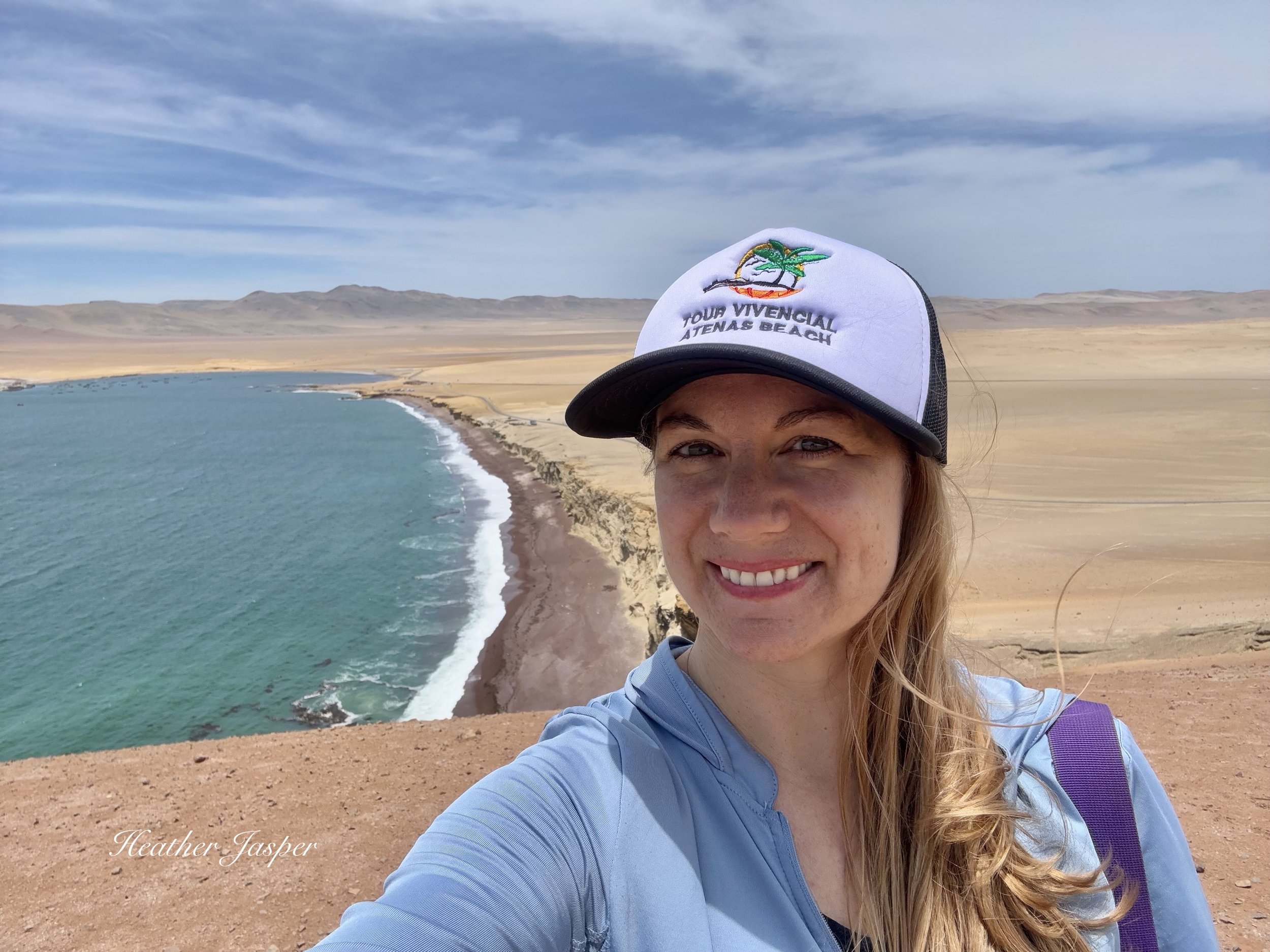Travel Tip 99
How to pack light?
I fit all my electronics in the small backpack that goes under the seat in front of me on a plane or on my lap in a bus.
We all know that there are many benefits to packing light, but how exactly can you do it?
In previous travel tips I’ve explained how packing cubes can help and how lighter luggage uses less jet fuel, which means you’re responsible for fewer carbon emissions. If you missed any previous travel tips, find them here.
Here are my top 6 tips for packing light.
1. Make a list of everything you need - but only what you know you’ll need!
The packing list is the same principle as a shopping list. Go to the store hungry and without a list and your cart will be full of all sorts of things you don’t need. Pack when you’re excited for a trip but without a list and you’ll arrive at your destination with stuff you don’t really need.
Stick to the list and you’re more likely to get there with only the things you actually need.
So, how do you decide what to put on the list?
I always start with electronics: camera, phone, maybe iPad and associated charging cords. Check if there is a way to bring just one cord for all your devices. Toiletries really depend on if you’re going to a hotel with amenities, a friends’ house, or a hostel where you’ll need your own soap & towel.
I usually take the backpack on the ground and the one of the three options above, depending on the type of trip.
2. Pick the right size backpack or suitcase.
Don’t pick the one you think you can carry, but the one that you want to carry. However small it is, you can find a way to pare down your list to fit! I have small refillable bottles so I can take only as much shampoo or face lotion as I’ll need for the trip. If it’s one week, I don’t need a full bottle. A travel size shampoo bottle looks small, but if you’re schlepping your backpack through the subway system in Paris or Buenos Aires, the full bottles of bath products do add up to a noticeable difference.
Before I went to Iquitos, I looked at photos of their market and decided to buy one of these locally made fans, rather than bring a fan from home. I already knew that I would need a fan in the hot, humid jungle.
3. Don’t take extra clothes.
Clothes are usually what takes up the most space and add the most weight. Choose your most versatile layers that you can mix and match. Plan to wear your heaviest layers and shoes on the plane – flights are usually cold enough you want the heavy layers anyway.
Find out if where you’re going you’ll have access to laundry, or if you can wash clothes in the hotel sink. Many places offer same-day or even 2-hour laundry service and if it’s only two days’ worth of clothes, they might be able to get it back to you even faster. I think having laundry done is always worth the expense if it means I can carry half or as third as many clothes.
I rarely take more than three days’ worth of socks and underwear if I can wash them in a sink. It’s so fast and easy to wash a pair of socks and a pair of underwear in a hotel sink every evening. Then they have two days to dry before I need them again.
4. Check if you can rent gear at your destination.
Besides electronics and clothes, is there any specialized gear you need? Binoculars for a birding trip? Sleeping bag for camping? First, check if renting is an option where you’re going. Many birding guides can help you rent binoculars or even highly specialized camera lenses. Huaraz, in Peru’s Cordillera Blanca mountains, has lots of rental shops with quality camping and mountaineering gear.
My Atenas Beach hat from my last trip to Paracas, Peru is my new favorite hat that I wear all the time.
5. Research what souvenirs people usually buy at your destination.
If you’re going to a beach, are you likely to buy a hat as a souvenir? Don’t bring one from home if that’s your plan. I often buy a hat when I travel because locally made hats are a great souvenir and I know I’ll use it. Souvenirs can be practical things that you’ll use during the trip.
On my most recent trip to the Amazon, I bought bug repellent when I arrived in Iquitos and left it at the hotel. They were happy to have an extra bottle and it was one less thing to pack. I also didn’t have to worry about the bottle spilling in my bag. I also bought a fan, which was practical for the heat and a great handmade souvenir.
6. Don’t take a whole pharmacy with you.
If I’m going to be in a town that has pharmacies, I don’t pack many meds. If I need ibuprofen or something for an upset stomach, I’ll buy it there. Most countries have fewer restrictions on prescriptions than the US, so I don’t need to stock up on just-in-case meds. However, I am diligent about taking extra prescription meds, which came in handy when I extended my last Argentina trip by a week and a recent rainforest trip from three day to six.
The bottom line: Pack the stuff you know you’ll need, not the stuff you might need.
The Cocalmayo hot springs are worth spending an extra day in Santa Teresa.
New blog: The Backpacker Route to Machu Picchu
It’s no secret that the train from Ollantaytambo to Aguas Calientes is overpriced, ($60-$150 USD each way), which means many travelers backpacking around South America simply can’t afford it. They take a circuitous route from Cusco to Santa María to Santa Teresa to Aguas Calientes. I just did that route because there have been a series of landslides to see just how bad the road is between Santa María and Santa Teresa. Click on the blog title above to see what the route is like, what to do in Santa Teresa and if the cost savings is actually worth it.





